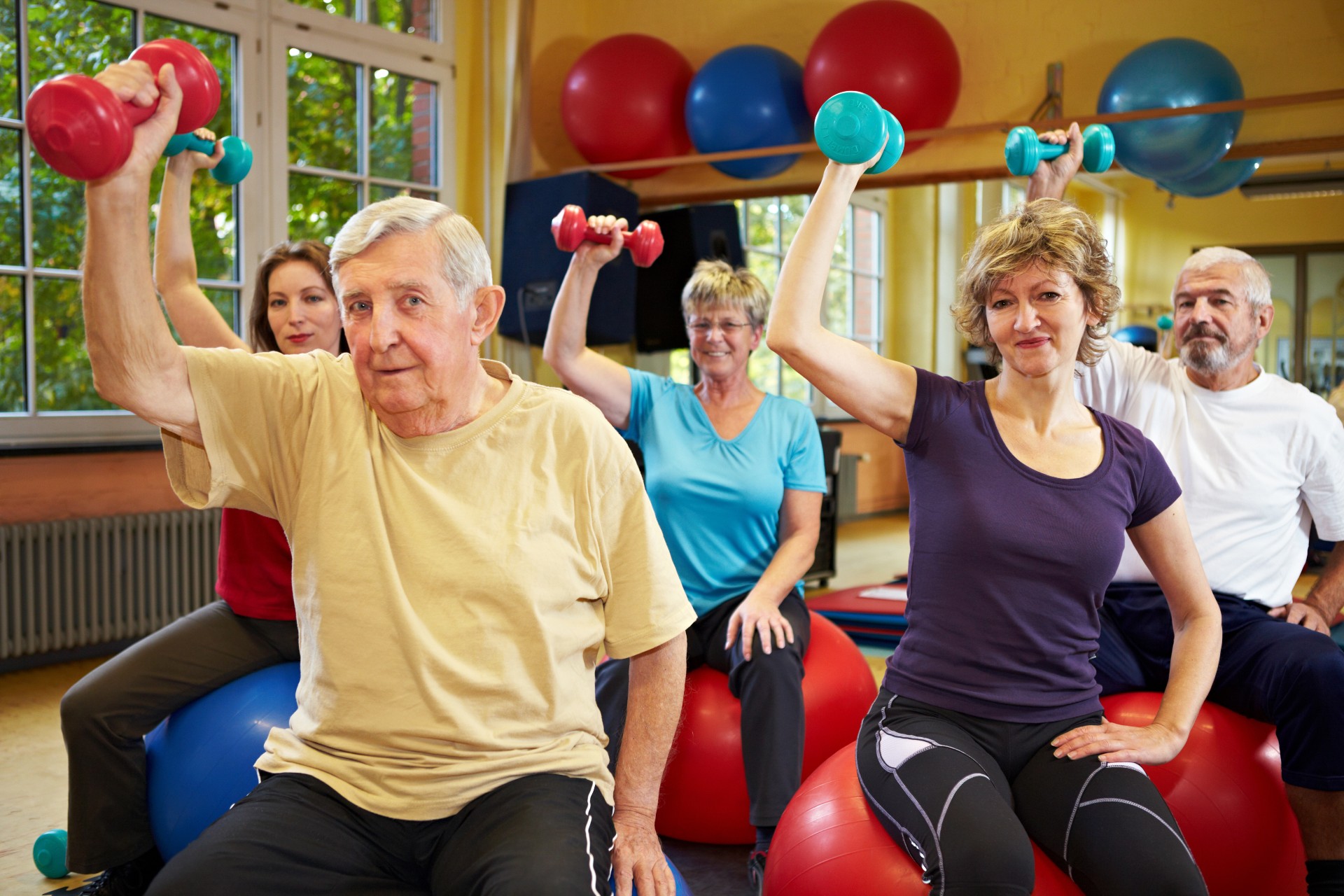Why Seniors Should Focus on Movement Goals, Not Exercise Regimes

Blood pressure creeping up? Get some exercise. Carrying a little extra weight? Try exercising away those extra calories. Feeling blue? Exercise can lift your mood.
Exercise may be the antidote to many of the things that ail you, but not everyone enjoys a good workout. Beyond that, not everyone is physically able to exercise.
Fortunately, many experts agree that if you commit to physical activity vs. exercise, you’ll still reap some of the benefits. That means you don’t necessarily need a rigorous exercise regime; instead, simply focus on adding more movement.
Physical activity vs. exercise
If you’re wary of exercise, understanding the difference between physical activity vs. exercise can help shift your mindset to a more favorable perspective on simply incorporating more movement into your daily life. In fact, many of the activities that constitute movement are actually things that you probably already do without realizing there’s a health benefit.
Incorporating more movement, or physical activity, into your day doesn’t have to be strenuous. Technically, any type of movement that burns energy is physical activity. Exercise is a type of physical activity, but so is walking the dog or doing a load of laundry.
Exercise is defined as movement intended to improve your body’s function and fitness. Exercise involves specific, targeted, and intentional movements designed to achieve certain goals, whether it’s building strength, toning muscle, burning calories, or any other number of fitness-oriented outcomes.
How movement affects health
Only about half of Americans are moving enough to impact their risk of serious health conditions like heart disease and diabetes, according to the Centers for Disease Control and Prevention. In addition to the important role it plays in disease prevention, adequate physical activity contributes to your health in numerous other ways, many that are especially relevant for seniors.
Benefits of physical activity for seniors include better balance and joint mobility, reduced fall risk, stronger bones, and muscle retention. Regular movement also contributes to better mental health, more regular sleep patterns, and healthier body weight. Physical activity is even associated with a delay in cognitive decline.
Setting attainable goals
Once you realize the important role physical activity plays in your health as you age, you may wonder how much physical activity vs. exercise you need in order to achieve those benefits. For seniors, the CDC recommends aiming for 150 minutes of moderate activity a week (for example, 30 minutes at a time, five times a week).
However, recognizing that not all seniors have the physical ability or stamina to meet that goal, experts suggest adapting that goal to your personal abilities. A good rule of thumb for healthy living: Sit less and move more. The more you move, the greater the health benefit.
Ideas for low-impact movement
You may be surprised by how easy it is to increase your movement when you think in terms of physical activity vs. exercise. Less intense activities are a great starting point, and many of these activities can be scaled up over time as you gain strength.
Walking: You may not think of walking as a way to boost your physical activity, but it surely is. In fact, it’s a great way to help you think about the difference between physical activity vs. exercise. A walk to the dining room is physical activity. A brisk walk on a track for a specific amount of time or distance is exercise. Walking is an easy form of movement that you can adapt to your personal ability.
Tai chi: This form of martial arts is best known as a calming, peaceful practice of mental focus. However, the fluid transition of poses indeed require movement. In fact, this art is an ideal form of physical activity for seniors because it promotes balance while building muscle tone and improving flexibility. It’s also a weight-bearing activity, so it plays a role in building stronger bones. Tai chi is easily adapted to all ability levels, so it’s an excellent low-impact choice for someone just starting to step up their daily activity levels.
Gardening: If you’re fond of tinkering in the garden, you know all the bending, trimming, digging, and weeding takes a lot of work. Did you realize all that effort constitutes physical activity? Gardening is a great example of an activity you may not think of as offering health benefits, but it’s actually quite good for you. In fact, not only is all that movement good for your body, but you can also reap therapeutic benefits, like better balance, functional movement, and stress relief, among others.
Looking for more healthy living inspiration?
For seniors who prioritize wellness, Springpoint Choice offers valuable resources you can access immediately, along with longer-term benefits that ensure your healthcare needs will be within easy reach. One example is our award-winning LivWell program, which creates custom programming to help seniors stay strong and healthy. Learn more about becoming a Springpoint Choice member and what’s included.
